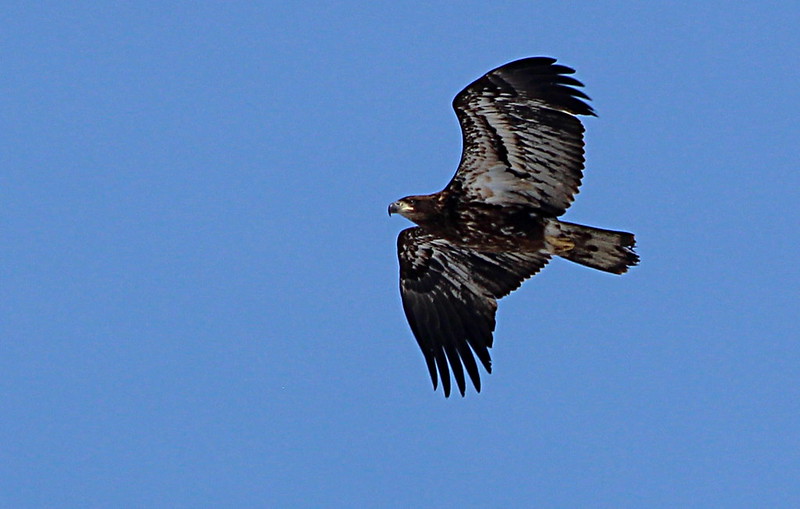The birds’ black eyes stared unblinking into mine, as if the animal was searching for something deep inside of me that only a bird of prey could see. It was absolutely captivating. Time stood still as the vulture and I established some level of communication that was beyond anything I had ever felt. It was as if the vulture was reaching down into my very essence to see if I was worthy of being this close, of being trusted. It was absolutely magical.
I’ve had close encounters with a variety of animals, but somehow birds are different. Perhaps it is their eyes that blink so much less than mine or the weird clear eyelid that comes up from below the eye. Their unwavering attention is intense.
Most wild encounters with birds of prey happen at a distance. These birds are very good at noticing people coming and staying away. The vulture that I was watching was at Audubon’s Birds of Prey Day and far closer than any wild vulture would be.
Mark Baker, of Olean’s Eagle Dream Rehabilitation Clinic, will be coming to Audubon on November 2 to share his hawks and owls with visitors from 10:00 a.m. – 2:00 p.m. It is a great chance to have a close encounter with one of these animals, but listening to Mark’s stories about the birds is just as amazing. His relationship to the animals is close, deep, and loving and his passion for helping restore birds to health obvious.
Aside from the Red-tailed Hawks that sit along the road, most hawks and birds of prey remain hidden in the landscape. They cross our paths as quick flashes of gray passing through the yard or haunting hoots heard on sleepless nights. People might see a hawk eating a bird in their yard, but these predators mostly go unnoticed.
Groups from local schools have started visiting Audubon on field trips. Every single group that has been with me so far has seen a bird of prey. The first group watched a Bald Eagle circle slowly off in the distance, coming closer and closer until it passed directly overhead just above the Nature Center. Another group was practicing their scientific observation skills on sticks, stones, and acorns when a Cooper’s Hawk flew past.
It was perfect timing. “What did you notice?” I asked. The bird had only been visible for three seconds, so there wasn’t much to see. “It was gray!” “It was brown” “It was huge” “It was fast” “It was spotty” “It had wings” The observations flew out fast and furious. Only the adult with the group said “It was a hawk!”
What was that hawk to someone who had never seen one? It was simply a gray-brown flash through the trees, there and gone in seconds. If we hadn’t been standing in that particular spot, doing that particular activity, the hawk would have been as unnoticed as most hawks in the wild.
Perhaps that is why seeing people who have birds of prey is so enchanting. Many hawk sightings consist of a gray flash or the silhouette of a bird off in the distance. While it is exciting to see any bird of prey in the wild, those sightings outside rarely have the power of an up close, face to face encounter with a live animal.
It is exciting that Mark Baker will be bringing his birds of prey back to Audubon, but perhaps more exciting that I may be able to reacquaint myself with the soul-piercing gaze of the vulture.
Audubon Community Nature Center builds and nurtures connections between people and nature. ACNC is located just east of Route 62 between Warren and Jamestown. The trails are open from dawn to dusk as is Liberty, the Bald Eagle. The Nature Center is open from 10 a.m. until 4:30 p.m. daily except Sunday when it opens at 1 p.m. More information can be found online at auduboncnc.org or by calling (716) 569-2345.


Recent Comments